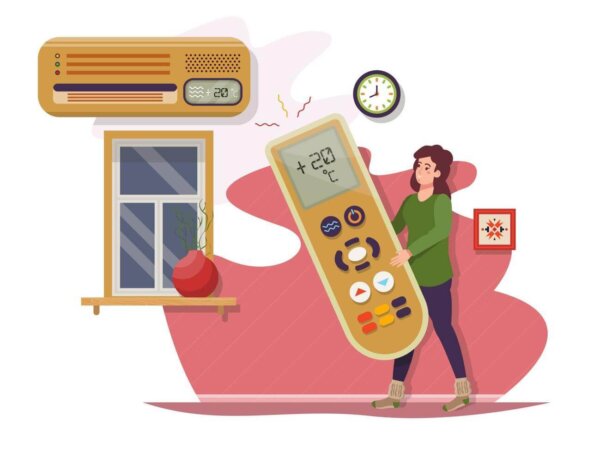Beyond Hot Flashes: What Women Really Want?
Every day I hear from women struggling with temperature regulation issues. Hot flashes might be the most talked about symptom, but temperature discomfort affects women at all life stages, creating constant frustration with clothing that can't keep up with their bodies.
What women truly want are garments that adapt to their body's temperature fluctuations. Market research shows that 65% of consumers are interested in thermal regulation technology, but only 7% of retail clothing offers these features, revealing a significant gap between consumer desires and market availability.
As someone who's spent years in the fashion lingerie industry, I've seen firsthand how temperature regulation has become increasingly important for women. Not just during menopause, but throughout everyday life—from office environments that swing between too hot and too cold, to night sweats that disrupt sleep. Today I'm exploring the technology that's changing how women experience comfort in their clothing.
Why is Temperature Regulation So Important for Women's Comfort?
Women frequently tell me their clothing feels either too hot or too cold, making them uncomfortable throughout the day. This constant battle with temperature affects their confidence, concentration, and overall well-being.
Temperature regulation is essential for comfort because our skin temperature can naturally vary from as low as 24°C (75.2°F) in winter to as high as 34°C (93.2°F) in summer. Both overheating and feeling chilly are equally uncomfortable experiences that disrupt normal activities and sleep patterns.
!
The human body naturally maintains its core temperature around 37°C (98.6°F), but our skin temperature fluctuates much more widely based on environmental conditions and physical activity. For women, these fluctuations can be even more pronounced due to hormonal changes throughout the month and different life stages.
Traditional fabrics simply can't keep up with these changes. Cotton might feel comfortable initially but retains moisture when you sweat. Synthetic fabrics might wick away moisture but often feel uncomfortably warm. Neither solution addresses the dynamic nature of women's temperature regulation needs.
The Temperature Regulation Market Gap
| Clothing Category | Consumer Interest in Thermal Regulation | Current Market Availability |
|---|---|---|
| Activewear | 65% | ~7% |
| Casual Wear | 48% | <7% |
| Business Wear | 32% | <7% |
| Home Textiles | 55% | <7% |
What Technological Solutions Can Address Women's Temperature Regulation Needs?
Women often ask me why their expensive clothing can't keep them comfortable throughout the day. The problem isn't just the quality of fabric but the lack of adaptive technology designed for temperature fluctuations.
Advanced solutions like HeiQ Smart Temp represent breakthrough technology that delivers both instant and continuous cooling through activated response to body heat. This technology uses a combination of hydro-functional polymers that mimic the body's natural evaporative cooling mechanism, activating when needed and deactivating once cooling is complete.

The evolution of temperature-regulating technologies has been impressive. Early generations focused on basic moisture wicking, but newer technologies like HeiQ Smart Temp work in a more sophisticated way. When I first encountered this technology, I was skeptical. How could a fabric "know" when to cool you down?
The science behind it is fascinating. The third generation of thermal regulation technology combines two distinct approaches:
- Hydro-functional polymers - These respond to rising skin temperature by enhancing evaporation, dynamically adjusting to the wearer's body temperature and moisture levels
- Bio-based thermo-functional polymers - Derived from vegetable oils, these provide an instant cooling sensation upon contact with skin
This dual-action approach provides what women truly need: immediate relief when they start feeling warm, plus continuous cooling that adjusts to their body's changing needs. It's not just cooling—it's intelligent cooling that works when and where it's needed.
Beyond Cooling: The Full Spectrum of Comfort
The challenge for women isn't just about cooling down—it's about maintaining an optimal temperature regardless of external conditions. What makes technologies like HeiQ Smart Temp particularly valuable is their ability to provide:
- Activated cooling that responds to body heat
- Moisture management that keeps skin dry
- Comfort across varying environmental conditions
- Performance that lasts through multiple wash cycles
These features are especially important in intimate apparel, sleepwear, and activewear where temperature regulation can dramatically impact comfort. I've found that women are willing to pay up to 18% more for clothing with effective thermal regulation technology, showing just how valued this functionality is.
How Can Women Benefit from Temperature-Regulating Clothing in Different Settings?
Many women tell me they struggle with temperature regulation at work, during exercise, and especially at night. Each environment presents unique challenges that require specific solutions.
Temperature-regulating technologies can benefit women across multiple settings—48% of consumers are interested in such technology for casual wear, 32% for business attire, and 55% for home textiles. These fabrics keep you cool and comfortable through revolutionary activated cooling technology that works precisely when you need it.

In my experience working with thousands of customers, I've identified three key areas where temperature-regulating clothing makes the biggest difference in women's lives:
Professional Settings
In office environments where temperatures are often optimized for men's comfort, women frequently experience discomfort. Temperature-regulating business attire can help maintain focus and confidence throughout the workday, eliminating the distraction of feeling too hot or too cold. I've heard countless stories from professional women who say that temperature-regulating undergarments have transformed their workday comfort.
Active Lifestyles
During exercise, the body's temperature fluctuates dramatically. Traditional moisture-wicking fabrics help with sweat but don't actively cool the body. Advanced thermal regulation technologies provide cooling that activates with body heat and deactivates once no longer needed, making workouts more comfortable and potentially more effective. Many of my customers report being able to exercise longer and recover faster when wearing properly designed thermal-regulating activewear.
Sleep Environment
Perhaps the most impactful application is in sleepwear and bedding. Temperature disruptions are a leading cause of sleep disturbances, particularly for women experiencing hormonal fluctuations. Temperature-regulating fabrics in pajamas and sheets can help maintain optimal sleeping temperatures throughout the night. The testimonials I receive about improved sleep quality from customers using temperature-regulating sleepwear are perhaps the most enthusiastic of all.
Conclusion
Women don't just want clothing that addresses hot flashes—they want adaptive solutions that respond to their body's changing needs throughout the day and throughout their lives. With technologies like HeiQ Smart Temp, we can finally offer garments that deliver the temperature regulation women have been asking for.
Get a Free Quote for Your Menopause Clothing Projects
